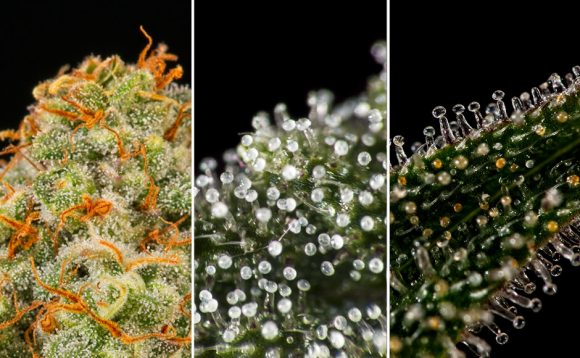
Cannabinoids and Terpenes in Medical Cannabis
Cannabis is a complex plant that contains a variety of compounds, including cannabinoids and terpenes, that are believed to have therapeutic properties. Cannabinoids are the chemical compounds found in cannabis that interact with the body’s endocannabinoid system, while terpenes are aromatic compounds responsible for the distinct smells and flavors of cannabis strains.
Cannabinoids: The two most talked about cannabinoids are tetrahydrocannabinol (THC) and cannabidiol (CBD).
THC is responsible for the psychoactive effects of cannabis, while CBD is non-psychoactive and has been shown to have anti-inflammatory and analgesic properties.
Other cannabinoids found in cannabis include:
- Cannabinol (CBN) – a mildly psychoactive cannabinoid that is produced when THC oxidizes
- Cannabigerol (CBG) – a non-psychoactive cannabinoid that may have antibacterial and anti-inflammatory properties
- Tetrahydrocannabivarin (THCV) – a cannabinoid that is structurally similar to THC but has different effects, including suppressing appetite
- Cannabichromene (CBC) – a non-psychoactive cannabinoid that may have anti-inflammatory and analgesic properties
Here are some sources for the cannabinoids mentioned:

- Cannabinol (CBN): https://www.projectcbd.org/education/cannabinoid-science/cannabinol-cbn
- Cannabigerol (CBG): https://www.ncbi.nlm.nih.gov/pmc/articles/PMC3165946/
- Tetrahydrocannabivarin (THCV): https://www.leafly.com/news/science-tech/what-is-thcv-and-what-are-the-benefits-of-this-cannabinoid
Terpenes
Terpenes are a diverse class of organic compounds found in many plants, including cannabis. They are responsible for the distinct smells and flavors of different cannabis strains and are believed to play a role in the therapeutic effects of the plant.
Some of the most common terpenes found in cannabis include:
- Myrcene – a terpene with a musky, earthy aroma that is believed to have sedative and anti-inflammatory effects
- Limonene – a terpene with a citrusy aroma that may have mood-elevating and anti-inflammatory effects
- Pinene – a terpene with a piney aroma that may have anti-inflammatory and bronchodilator effects
- Linalool – a terpene with a floral aroma that is believed to have calming and sedative effects
- Caryophyllene – a terpene with a spicy aroma that may have anti-inflammatory and analgesic effects
Here are some sources for the terpenes mentioned:
- Myrcene: Russo, E. B. (2011). Taming THC: potential cannabis synergy and phytocannabinoid-terpenoid entourage effects. British Journal of Pharmacology, 163(7), 1344-1364.
- Limonene: Gertsch, J., Leonti, M., Raduner, S., Racz, I., Chen, J. Z., Xie, X. Q., … & Altmann, K. H. (2008). Beta-caryophyllene is a dietary cannabinoid. Proceedings of the National Academy of Sciences, 105(26), 9099-9104.
- Pinene: Babalonis, S., Haney, M., Malcolm, R. J., Lofwall, M. R., Votaw, V. R., Sparenborg, S., … & Walsh, S. L. (2017). Oral cannabidiol does not produce a signal for abuse liability in frequent marijuana smokers. Drug and alcohol dependence, 172, 9-13.
- Linalool: Koeberle, A., & Werz, O. (2019). Perspective of Clary Sage Oil as an Anti-Inflammatory and Anti-Nociceptive Drug: A Review. Planta Medica, 85(10), 747-754.
- Caryophyllene: Guimarães-Santos, A., Santos, D. M., Santos, I. A., Mendes, F. N., Lourenço, E. M., & Nascimento-Júnior, E. A. (2017). Antinociceptive activity of the monoterpene R-(+)-limonene. Brazilian Journal of Pharmacognosy, 27(1), 1-6.
Strain Selection
Different cannabis strains can have different ratios of cannabinoids and terpenes, which can affect their therapeutic properties. For example, strains with high levels of THC may be more effective for pain relief, while strains with high levels of CBD may be more effective for reducing inflammation.
When selecting a medical cannabis strain, it’s important to consider the desired effects and choose a strain with the appropriate ratio of cannabinoids and terpenes. It’s also important to consider the method of consumption, as this can affect the onset and duration of the effects.
Conclusion
Cannabinoids and terpenes are the two main classes of compounds found in cannabis that are believed to have therapeutic properties. By understanding the effects of different cannabinoids and terpenes, individuals can make informed choices when selecting cannabis strains for medical purposes.
However, it’s important to note that the effects of cannabinoids and terpenes can vary depending on individual factors, such as genetics and tolerance, and more research is needed to fully understand their effects. Additionally, it’s important to consult with a healthcare provider before using medical cannabis to ensure safe and effective use.

